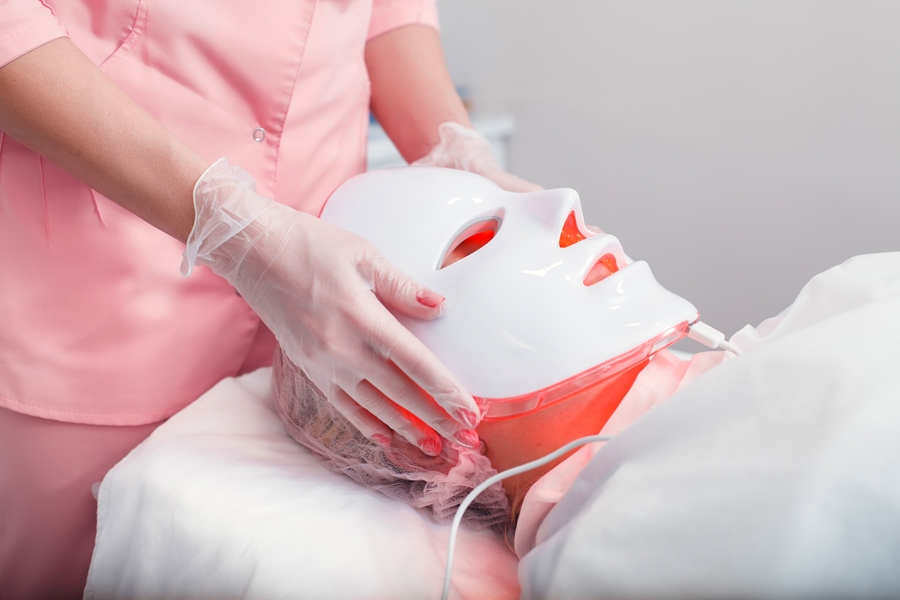Light Therapy: Mask, Handheld, or Panel-Style?
Written by Celluma by Biophotas, IncThe ancient Egyptians knew the healing power of light. Using sunlight and different colored gems strategically placed in their temples, patients were “color coded” with each color on the spectrum having a specific medical purpose. Color, a manifestation of light, was recognized as having therapeutic and divine meaning.
A RISE IN POPULARITY
However, it was the work of the Danish physician, Dr Neils Finsen, who pioneered the benefits of using various artificial wavelengths to treat medical conditions and depression. This success saw the expansion of the popularity in the use of light and its application in medical conditions and skin disorders.
Work by NASA in the 1990s demonstrated that using light energy from light emitting diodes (LEDs) stimulated cellular repair to promote wound healing and human tissue growth. Within the last few decades, a better understanding of photobiology and an increasing demand for minimally invasive, yet effective, dermatologic treatments have led to the growing interest in LED devices, not only as a stand-alone therapy but as an adjunctive to other aesthetic procedures. With an excellent safety profile and proven scientific evidence, no other technology has such a broad utility in such a wide variety of medical and aesthetic applications.
There are numerous manufacturers of LED devices in the market. This can be a confusing and daunting situation, so it’s worth spending time doing your own research. Ask prudent questions regarding safety, efficacy, and clinical evidence based on their device and technology.
CHOOSING DEVICE STYLE
A quick web search will reveal hundreds of websites offering the latest devices and designs. These range from a panel-style to mask and handheld systems. Newer technology and design have seen the emergence of flexible shape-taking systems. There are also those devices promoting varying colors to treat a variety of conditions. It is worth remembering that blue, red, and near infrared are the only clinically proven wavelengths to have therapeutic benefit.
What delivery system would work best for you would depend on a variety of factors. The panel, sometimes referred to as canopy-style, is the market leader, as the large surface area can treat a larger treatment area than the mask or handheld. This translates into greater uniform exposure of the wavelengths to increase the benefit. However, it is not just how many diodes are present but whether they are emitting the proven wavelengths. The one thing to bear in mind is that older designs are space occupying, so that may influence your decision if you are limited for space. For more portable and space saving designs, look for panels that are stand-free. Today’s stand-free LED panels deliver multiple wavelengths at the same time, which makes them more effective, affordable, and capable of treating a wider range of skin conditions.
The use of celebrity endorsement and social media has seen rapid growth in sales of the LED mask as the must-have in clinic treatment. However, not all masks are born equal, so again, spend time asking relevant questions. Identify where the masks are manufactured. Is there evidence of safety and efficacy on the mask? The rainbow colors available should also dissuade from the purchase. Yes, they look pretty, but the additional lights have no proven evidence of efficacy. Don’t be tempted by the price. It’s cheap for a reason, so you may end up paying much more for an upgraded device when the mask fails to deliver results.
Additionally, some clients may not like the close proximity of the mask or the indentations left behind and the weight of the mask sometimes hinders further engagement. The emergence of flexible shape-taking panels overcomes this problem. They permit a more consistent distance to the tissue and ultimately uniform absorption of the light energy without the negatives of the mask. Additionally, they have the ability to treat the face, neck, and décolletage – not available with most masks that focus on the face only.
Handheld devices are extremely useful when used to treat small target areas such as psoriasis, acne, wound healing or joint pain, and inflammation. They have fewer diodes but can be quite effective if purchased from reputable companies with FDA clearance. The clients can use them in the home setting, and between clinic visits for maintenance. It is incumbent on the professional to encourage the consumer to purchase FDA-cleared devices and ensure they use the appropriate wavelength for the desired result.
The many choices of LED devices available on the market can make decision making a challenge. Whatever system you choose, decisions should be based on clinical research, efficacy, safety profile of the device, ease of use, and proven clinical results.

Pam Cushing is a registered nurse with over 35 years of experience in emergency medicine. She has worked in the field of aesthetics for over 15 years, full-time for the last five years. Cushing holds a degree at the master’s level, with commendation, as well as a post-graduate diploma in aesthetic medicine, with merit. She is an independent nurse prescriber in the United Kingdom. Cushing is a consultant educator for a couple of companies educating in injectables, skin resurfacing and chemical peel, microneedling, and LED. She thrives on being able to educate, motivate, and encourage others to grow and develop professionally. She is passionate about skin and the benefits of aesthetics in improving the confidence and quality of lives. Cushing believes our key role is to educate the consumer on appropriate treatment modalities with the focus on maintaining skin health.
